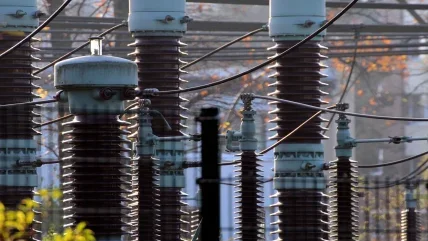
Increasing the capacity of the existing grid has much to recommend it, and US-based Smart Wires has a power-electronics based digital power flow control technology – an evolution of FACTS (flexible AC transmission systems) – that can do just this (see MPS, October 2021, pp 13-15). But, somewhat surprisingly, it is proving very difficult to build a commercially successful business, as reflected in a plummeting share price.
Smart Wires’ application for a delisting of its Swedish Depositary Receipts (“SDRs”) from Nasdaq First North Growth Market, Sweden, has been accepted, with 7 March 2023, the last day of trading.
The company reported that its final full-year orders for 2022 were $24.6 million, compared with guidance of $50-60 million, noting that “the adjustment is due to a delayed project the company expects to be awarded in early 2023.”
“Supply chain delays have impacted production – in terms of new product cut-in, ramping, and volume – which has prevented backlog execution, deliveries, and milestone payment collections”, said Peter Wells, CEO.
“We have continued to develop and position the business, but the delays reached a point… where we were left with no choice on dropping revenue and margin guidance, lowering new orders expectations, and announcing the need to address near-term liquidity challenges, up to and including the possible sale of the business.”
Measures taken during 2022 included “initiation of a restructuring to further focus the business on core markets and improve its cost structure”, with a 35% reduction in the workforce.
Nevertheless, Smart Wires continues to report involvement with significant projects. In January 2023, it announced, jointly with EPM, completion of a large-scale project that uses SmartValve (its “flagship product”) to enable the connection of over 400 MW of distributed renewable generation (principally hydro and solar) in Colombia, supporting demand growth in Medellín and the surrounding Antioquia region, and helping “reduce electricity tariffs for consumers.”
Building on a successful SmartValve pilot project in 2021, which was the first installation of the technology in Latin America, this project involved using SmartValves on three transmission lines in the Aburrá Valley metropolitan area to solve grid congestion, both in normal operation and in contingency scenarios (N-1).
SmartValve, a modular static synchronous series compensator (SSSC), which has been described as “distributed FACTS”, works by pushing power off overloaded lines or pulling power onto underutilised lines, and can also provide dynamic services such as improving transient stability and voltage stability.
Also in January 2023, Smart Wires announced it had signed a contract with National Grid Electricity Transmission plc (NGET) in the UK for new projects, under an existing framework agreement, between the parties. This contract will produce a net revenue of approximately $29 – 31 million in 2024.
NGET has been using SmartValve for several years to maximise use of its existing network, unlocking up to around 2 GW of extra grid capacity. The new projects will use SmartValves on two more circuits in England to release additional capacity on the network for the integration of new renewable energy and the North Sea Link interconnector.
SmartValve has also been successfully deployed as part of Transgrid’s Victoria-NSW Interconnector (VNI) upgrade, the completion of which was reported in November 2022 and which has “unlocked 170 MW of additional capacity.”
Nine SmartValve units were installed at Transgrid’s Stockdill substation in the ACT to provide 120 MW of additional capacity, while six units at Yass substation will provide another 50 MW.
“By using power flow controller technology we can unlock additional energy without needing to build new lines or upgrade existing transmission lines, which minimises environmental and community impact”, said Brett Redman, Transgrid CEO.
The SmartValves project was the preferred option identified to increase transfer capacity between NSW and Victoria in the 2020 Project Assessment Conclusion Report (PACR) by the Australian Market Energy Operator (AMEO) and Transgrid.
The PACR found the VNI upgrade is expected to deliver net benefits of up to $268 million to electricity customers, thanks to more efficient sharing of generation resources between the states and enabling more power from renewable sources to enter the grid.
Smart Wires has also been working on its first project in Canada, which involved “evaluating SmartValve in a mobile deployment to increase system capacity and improve reliability.”
The SmartValves were deployed at a substation in southern Alberta to reduce network congestion by actively balancing power flows across the surrounding circuits. This unlocked increased capacity on the existing network for generation, resolving a short-term network need in the area, says Smart Wires.
The mobile deployment option enables companies to install and commission SmartValves within days, the company says, and “without the need for costly substation site modifications.”






